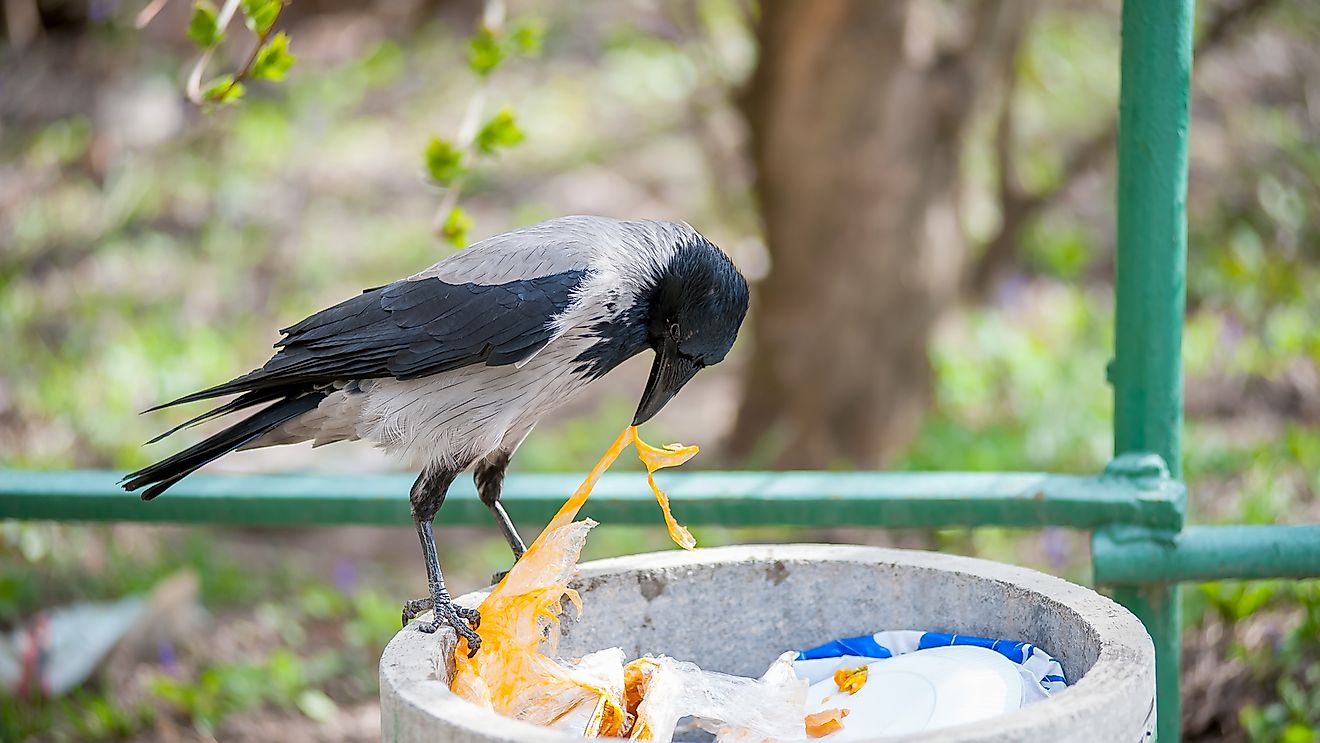Why Are Crows Important To The Ecosystem?

Crows are birds revered for their adaptability, intelligence, and a loud "caw" sound. They are disliked for damaging crops and being a nuisance, but they are less destructive than initially thought. There are roughly 40 species of crows. The birds are highly adaptive and are found throughout the world. The American crow lives in the grasslands and agricultural lands of North America while the common crow is found across northern Europe, Asia, the Pacific, Africa, and South America. Crows are intelligent birds; they are capable of solving basic problems and possess excellent communication skills. They have a good memory and can identify a person with bad intentions from a group of people. Crows are social birds; they live in extended families and look out for each other. The species appear in mythologies as a bird of bad omen or a message from the divine. Regardless, their importance in the ecosystem is undisputed.
Crows In Trash
In the 1960s, crows began abandoning rural settings for safer urban settlements where plenty of food was readily available. Today, thousands of crows commute between pastures and cornfields in the morning and urban dumpsites in the late afternoon. Many people consider crows a nuisance for scattering waste all over and making loud noises at night, but the birds are diurnal and neither feed nor move at night. Despite their reputation, crows play a vital role in waste management. They consume tons of waste every year, preventing the spread of diseases and bad odor. Crows have highly-efficient digestive systems like those of vultures, and as omnivorous birds, they can feed on meat and plants. Their intelligence plays a role while scavenging for food as the birds have been observed using tools to access food. The most effective way to deter crows is to keep dustbins closed or empty; otherwise, they will always find a way to access it.
Crows In Gardens
Crows are occasionally blamed for the damage caused by other birds or animals. They prefer meat to vegetation and stick around gardens to eat grubs and insects rather than vegetables and fruits. Considerably, their ability to clear pests and parasites from farmlands greatly outweigh the minimal damage they inflict on vegetation. An extended family of crows can feed on more than forty thousand caterpillars, armyworms and grubs during a nesting season. They also act as pollinators by transporting pollen from one plant to another. They eat dead carrion, thus preventing decay and, consequently, an influx of insects. If crows are a nuisance in the garden, the solution is not to shoot and kill them but rather to scare them away by hanging shining materials, playing music, and introducing predator birds such as owls.
Crows And Public Health
Crows are susceptible to the West Nile virus and are used by health authorities as an indicator species. During an outbreak, the birds die in large numbers prompting a health concern response. Unfortunately, people have the impression that crows spread the West Nile virus, which is a false assumption since mosquitoes are the culprits. Bird droppings act as fertilizer but encourage the growth of histoplasmosis fungus in the soil. The spores may become airborne and cause respiratory complications. Histoplasmosis is common in the Central and Eastern United States. About 80% of the population have unknowingly been affected. Most people acquire the fungus from poultry farms or during cave explorations but blame the crows and use it as a justification to kill them.
Poisoning Crows Is Not A Solution
Many people opt to poison crows as an easy fix to the nuisance of the birds using DRC-1339 slow-acting poison. Killing a few birds does not make the survivors leave the neighborhood but instead allows the young ones to thrive with less competition. DRC-1339 damages the heart and kidney, and the affected bird dies in 2-3 days. In most cases, the poison affects non-target animals. Most crows are listed as of least concern by the International Union for Conservation of Nature except the Flores crow. The species is listed as endangered due to a small population, limited range, and destruction of its natural habitat. It is estimated that there are less than 2,000 mature individuals. The Hawaiian crow was declared extinct in the wild.











